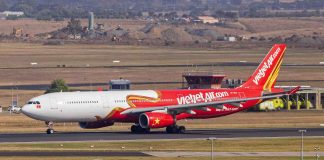China and the Association of Southeast Asian Nations (ASEAN) have signed an upgraded free trade agreement, with Premier Li Qiang presenting deeper economic integration with Beijing as a counterweight to tariff measures imposed by the United States under President Donald Trump.
The ASEAN–China Free Trade Area “Version 3.0” (ACFTA 3.0) was concluded in Kuala Lumpur on Tuesday, 28 October, during the bloc’s annual leaders’ meetings hosted by Malaysia.
Li told the ASEAN–China summit that tighter coordination would help address global uncertainty, arguing that “confrontation” and outside “interference” harm regional trade. He framed the upgrade as an instrument to preserve market access and supply chain resilience, and as a response to partners facing higher duties. Malaysian Prime Minister Anwar Ibrahim, the 2025 ASEAN chair, witnessed the signing alongside Li.
The agreement updates the framework first signed in 2002 and implemented in 2010. According to Chinese government briefings, “Version 2.0” was concluded in 2015 and took full effect in 2019; negotiations for ACFTA 3.0 began in November 2022 and were wrapped up in May this year. The new protocol is intended to widen cooperation in digital trade, green economy provisions and support for small and medium-sized enterprises, and to simplify non-tariff procedures.
ASEAN and China are each other’s largest trading partners. Two-way trade has risen from $235.5 billion in 2010 to nearly $1 trillion last year, underlining the scale at stake for both sides as tariff barriers increase elsewhere. Officials say ACFTA 3.0 is designed to make it easier for smaller firms to benefit by streamlining customs processes and improving market entry conditions in services and investment.
The political context was explicit. Li criticised “unilateralism and protectionism”, remarks widely read as aimed at Washington following a new round of US tariffs on a range of imports. Trump, who attended ASEAN-related engagements in Kuala Lumpur earlier in the week, announced fresh economic initiatives with Cambodia, Malaysia, Thailand and Vietnam, though these sit alongside the broader tariff regime his administration has introduced.
There were tentative signs of a thaw: Beijing and Washington have been preparing a leaders’ meeting in Seoul later this week, with negotiators from both sides signalling movement towards a limited trade understanding that could reduce the risk of further escalation. The meeting is expected on Thursday, 30 October.
Not all ASEAN reactions were unqualified. Philippine President Ferdinand Marcos Jr. welcomed the trade upgrade but cautioned that “cooperation cannot exist alongside coercion”, referring to continuing confrontations in the South China Sea. He pressed China to “commit to cooperation and meaningful engagement” and criticised what Manila says are hazardous manoeuvres and plans for a “nature reserve” at a disputed feature, which it deems to have no basis in international law. Marcos said Manila would continue to engage on crisis management, and he called for faster work on a Code of Conduct, a priority as the Philippines prepares to assume the ASEAN chair next year.
Beijing rejected Manila’s characterisation, with the Foreign Ministry in Beijing accusing the Philippines of “deliberate infringements and provocations at sea”. ASEAN governments generally compartmentalise maritime disputes from economic cooperation; analysts argue the new trade provisions are unlikely to be derailed by tensions at sea, even as incidents continue.
Economically, ACFTA 3.0 overlaps with the Regional Comprehensive Economic Partnership (RCEP), of which both China and all 10 ASEAN members are part. Where RCEP sets region-wide baselines, the upgraded bilateral framework is pitched as a way to move faster in specific areas such as digital rules and sustainability standards. Negotiations for the 3.0 update began in 2022, reflecting a shared interest—amid pandemic recovery and supply chain reconfiguration—in locking in predictability as global trade politics turn more restrictive.
The upgrade also has a practical business focus. Officials highlighted commitments to clearer procedures for services trade, improved mutual recognition for certain professional qualifications, and measures aimed at SMEs, which form the backbone of ASEAN economies. ASEAN capitals have sought such provisions to widen the user base of trade agreements beyond large multinationals and to reduce administrative costs.
For Beijing, the Kuala Lumpur package offers both economic and diplomatic dividends: it signals continuity with multilateral trade norms at a time of tariff-driven fragmentation, and it reinforces China’s position as a core market partner for Southeast Asia. For ASEAN, the calculus is to expand market opportunities and investment inflows while maintaining “centrality” by engaging all major partners, including the United States. As Anwar put it, the bloc’s approach is to keep lines open with both Washington and Beijing.
Whether the latest measures deliver material benefits will turn on implementation. Businesses will look for detail on how new digital and green provisions are enforced, how quickly customs and regulatory procedures are simplified, and whether outstanding barriers in services and investment fall in practice. With trade between ASEAN and China already at historic highs, the test for ACFTA 3.0 will be whether it reduces friction for smaller firms while insulating regional commerce from external shocks.
Chinese and Philippine vessels collide near Scarborough Shoal as Beijing cites ‘control measures’



